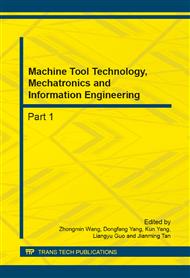p.1111
p.1115
p.1118
p.1122
p.1126
p.1132
p.1136
p.1141
p.1144
Approach to Intent Recognize Based on Petri Nets
Abstract:
Intent recognition is an important problem to address in order to enhance the capabilities of battlefield surveillance systems. It is concerned with finding a priori defined template that possibly are instantiated in the present flow of battle events. Intent recognition requires that many sub problems are solved. For instance, we need to establish which actions are interesting, how to represent these actions, and inferable events and states that can be used for representing them. In this paper we discuss current research efforts and goals concerning template-based intent recognition. We provide a categorization of approaches for intent recognition together with a formalization of the template-based intent recognition problem. We discuss this formalization in the light of an air-ground striking scenario. Finally, we conclude that intent recognition is an important problem to look into for enhancing the overall situation awareness of decision makers.
Info:
Periodical:
Pages:
1126-1131
Citation:
Online since:
September 2014
Authors:
Price:
Сopyright:
© 2014 Trans Tech Publications Ltd. All Rights Reserved
Share:
Citation:


